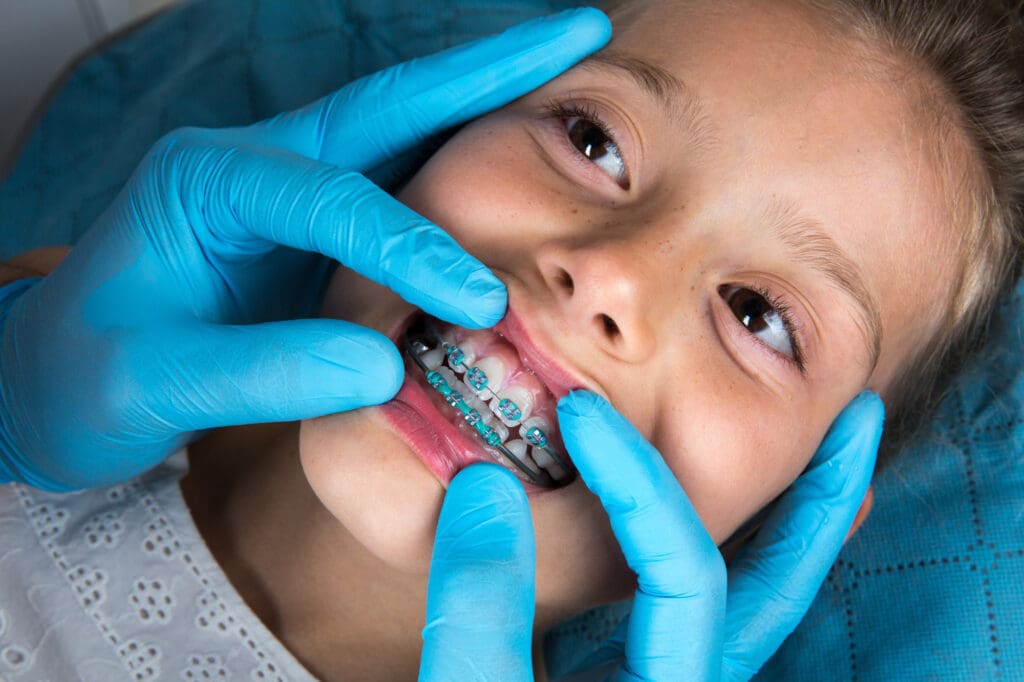
When Is the Right Time for Braces for Kids? A Parent’s Guide
Posted on June 28, 2025
If you’re a parent wondering when your child might need braces, you’re not alone. Many families wait until the teen years to think about orthodontic care—but in reality, treatment decisions can start much earlier. Understanding the right time for braces can help your child avoid future complications and enjoy a lifetime of confident, healthy smiles.
This guide walks you through the signs, stages, and timing to watch for when considering braces for your child.
Why Early Evaluation Matters
The American Association of Orthodontists recommends that children have their first orthodontic evaluation by age 7. This doesn’t mean your child will get braces that early—it’s simply the ideal time for an orthodontist to assess how their teeth and jaws are developing.
At this stage, a mix of baby and permanent teeth is present, which gives orthodontists a clearer picture of future alignment and bite patterns. Early detection makes it possible to catch small issues before they become more complex.
What the Orthodontist Looks For
During an initial evaluation, the orthodontist checks more than just crooked teeth. They look at overall facial development, jaw growth, and how the upper and lower teeth are lining up.
Common issues identified early include:
- Crowding or spacing problems
- Bite issues (overbite, underbite, crossbite, open bite)
- Jaw misalignment
- Mouth breathing or thumb-sucking habits
- Delayed loss of baby teeth
Early intervention, if needed, can guide proper jaw growth, reduce the risk of trauma to protruding teeth, and potentially shorten the length or complexity of future treatment.
Phase 1 vs. Phase 2 Orthodontics
Orthodontic treatment for kids often falls into two phases—early (Phase 1) and comprehensive (Phase 2).
Phase 1: Early Treatment (Ages 6–10)
This phase typically occurs while some baby teeth are still present. The goal is to correct issues related to jaw growth, bite development, and harmful oral habits. Appliances like expanders or partial braces may be used to guide development.
Phase 2: Full Treatment (Ages 11–14)
This is when most kids begin traditional braces or Invisalign. By this time, all or most permanent teeth have erupted, and alignment and bite can be fully addressed.
Not every child needs two phases of treatment. However, starting with an evaluation around age 7 helps your orthodontist determine the best course of action for your child’s specific needs.
Signs Your Child May Be Ready for Braces
While an orthodontist is the best person to assess readiness, there are several signs you can watch for at home that may indicate your child could benefit from braces.
Look for:
- Early or late loss of baby teeth
- Difficulty chewing or biting
- Speech problems or lisping
- Teeth that are visibly crowded or overlapping
- Thumb or finger-sucking beyond age 5
- Protruding front teeth
- Jaws that shift or click
If you notice any of these signs, it may be time to schedule a consultation.
What Age Is “Too Late” for Braces?
The good news: it’s never too late to improve a smile! However, early treatment can take advantage of your child’s natural growth and often prevents more complicated procedures later on. Waiting until later adolescence or adulthood doesn’t disqualify someone from braces—but it may require longer treatment or different options.
Starting with an early evaluation gives your child more options and allows you to plan ahead—whether treatment is needed right away or in the future.
How Long Will My Child Wear Braces?
Most kids wear braces for 18 to 24 months, depending on the severity of their case and their compliance with care instructions. If early treatment is needed, that phase usually lasts 6 to 12 months, with a monitoring period before full treatment begins.
After braces, a retainer is worn to maintain results and prevent shifting. Your orthodontist will provide a customized timeline based on your child’s needs.
Making Braces a Positive Experience
Wearing braces is a big step—but it doesn’t have to be a stressful one. Encouraging your child, celebrating milestones, and choosing the right orthodontic practice can all help make the journey smoother and more enjoyable.
Tips to support your child:
- Help them understand the benefits of braces beyond appearance
- Make oral hygiene part of the routine
- Attend all follow-up visits to track progress
- Let them choose fun rubber band colors (for traditional braces)
Your support can make all the difference in how your child feels about treatment.
Ready to Explore Braces for Your Child?
If your child is nearing age 7 or showing signs they might need orthodontic care, the team at Success Orthodontics is here to help. We offer expert evaluations, gentle care, and personalized treatment options for kids and teens across Mayfield Heights, Twinsburg, Richmond Heights, Solon, and other local communities.
Schedule your free evaluation today to find out how we can support your child’s healthiest, happiest smile.

